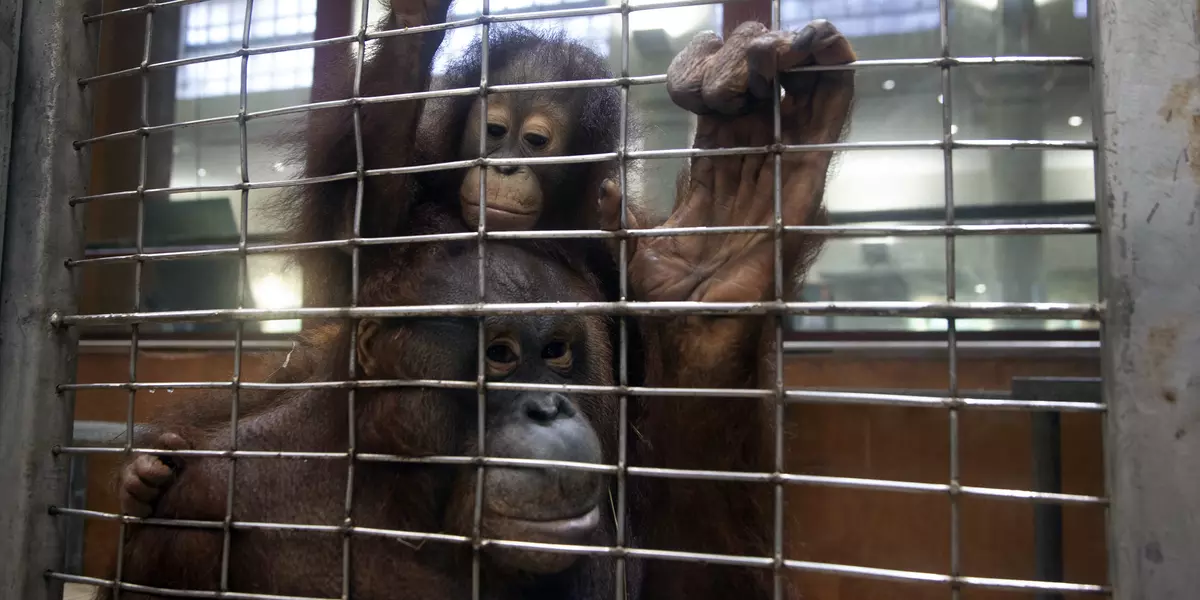
To Each Mammal, Its Milk
Milk — it’s what distinguishes mammals from the rest of the animal kingdom. It’s also an incredibly complex substance, and scientists are still working to identify the many chemical components of milk and the roles they play in nutrition, immunity, brain development and other areas. As part of this effort, researchers at the National Institute of Standards and Technology (NIST) and the Smithsonian’s National Zoo and Conservation Biology Institute are studying the unique milks of many species. In a related project, NIST scientists are also studying the composition of human milk. This research will help zoos raise healthy animals and help scientists understand how mother’s milk promotes the development of healthy human babies.
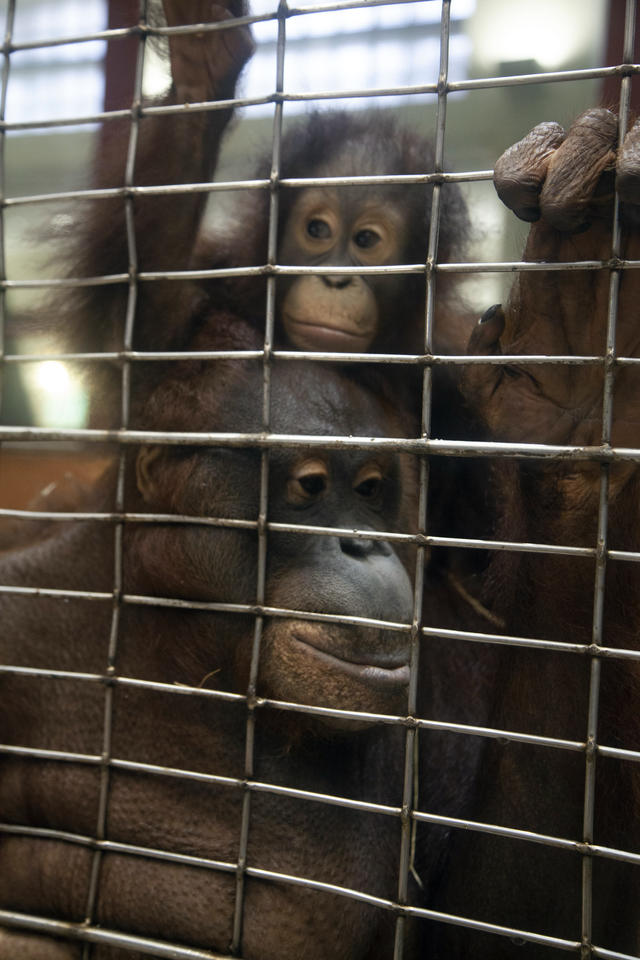
Batang, a Bornean orangutan, and her two-year-old, Redd, live at the National Zoo in Washington, D.C.
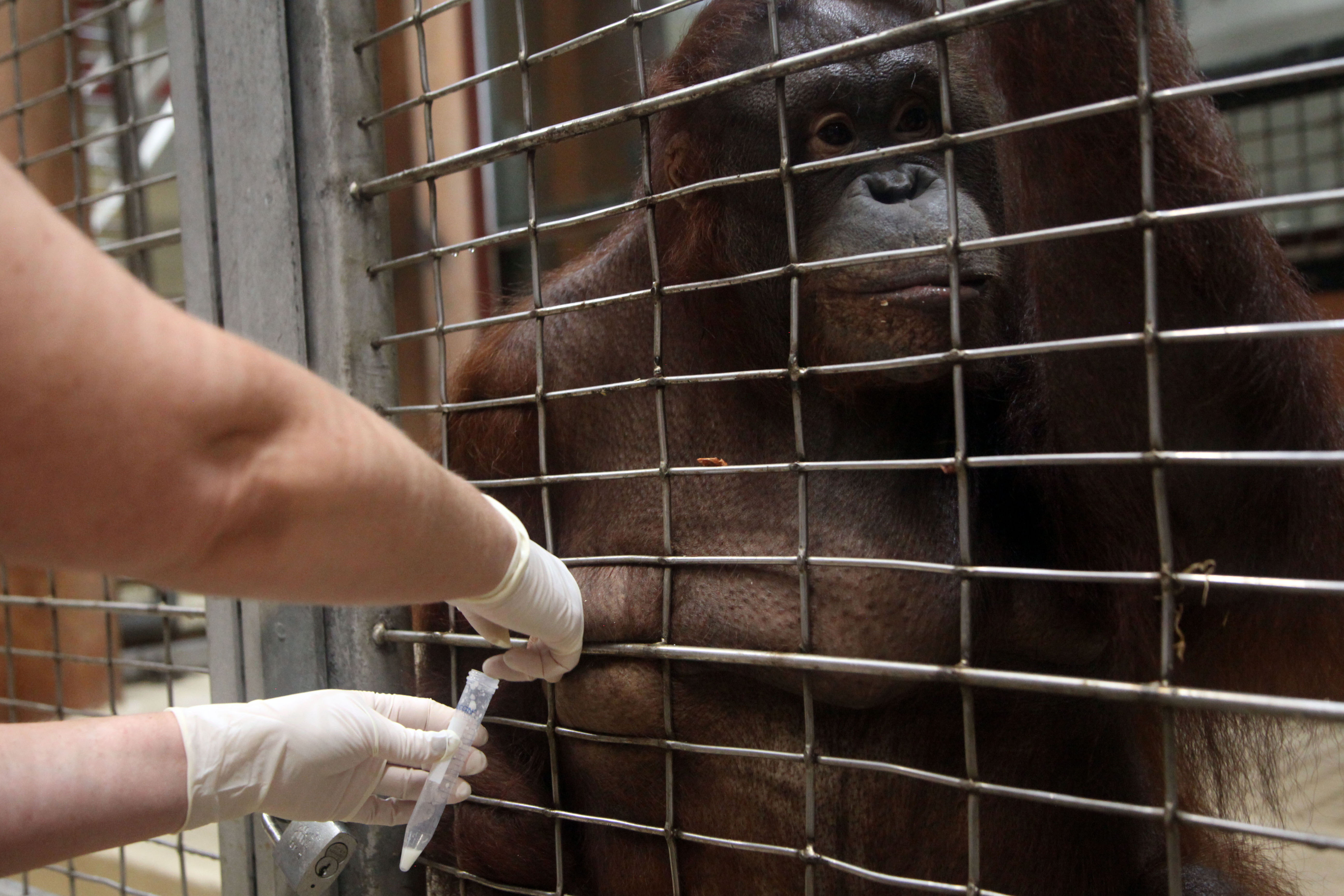
Every week, primate keeper Erin Stromberg collects milk from Batang. Scientists analyze those milk samples to track how the milk’s nutritional profile changes as the infant gets older. That way, if any zoo has to create a milk substitute for a young orangutan, they can make a formula appropriate for the youngster’s age.
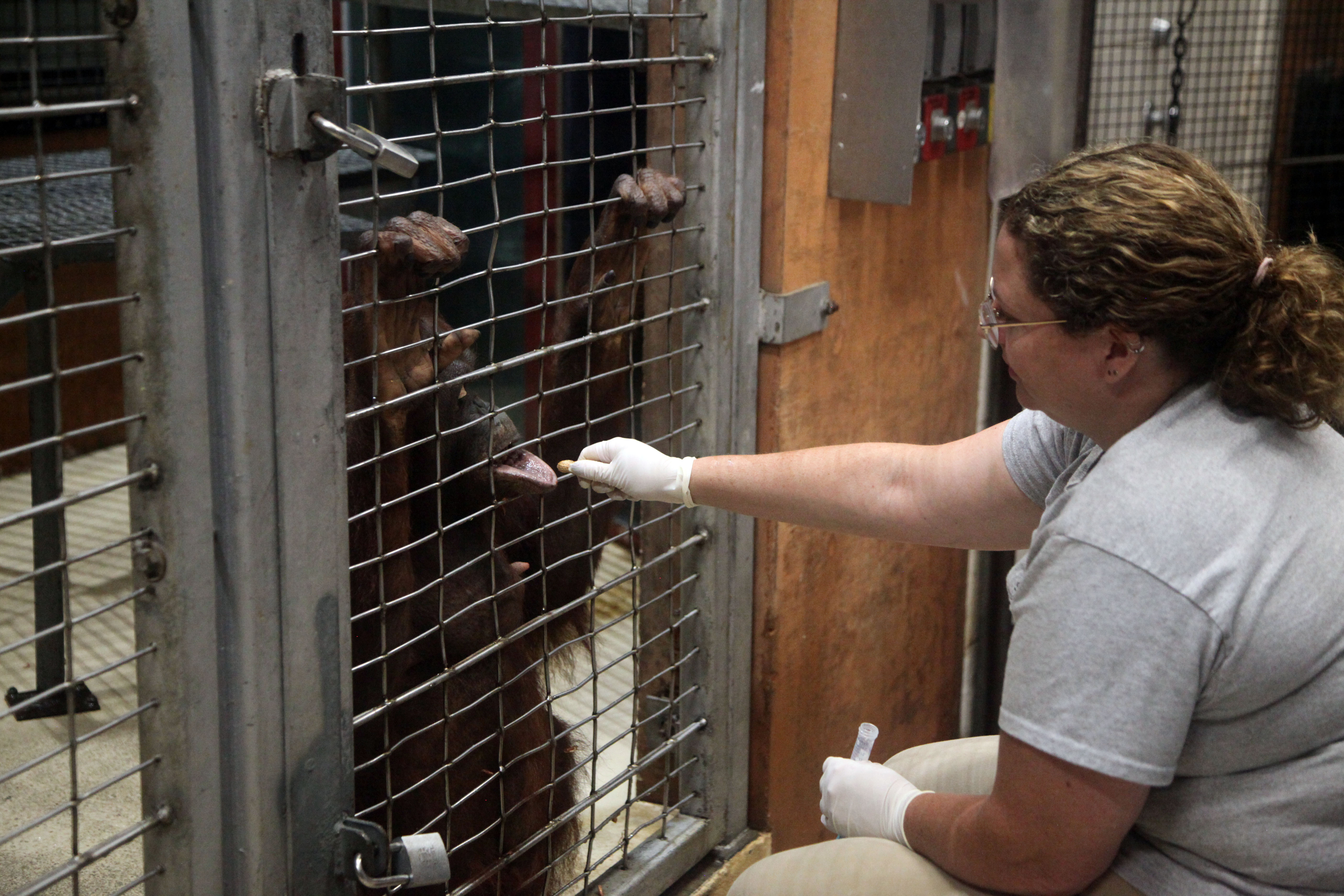
Batang has been trained to give milk voluntarily and is rewarded with peanuts for doing so. She can walk away at any point and is never forced to participate. Stromberg is the only keeper who collects milk from Batang, and over time they’ve developed a close relationship. “She’s smart as a whip, and she has a very strong personality,” Stromberg said.
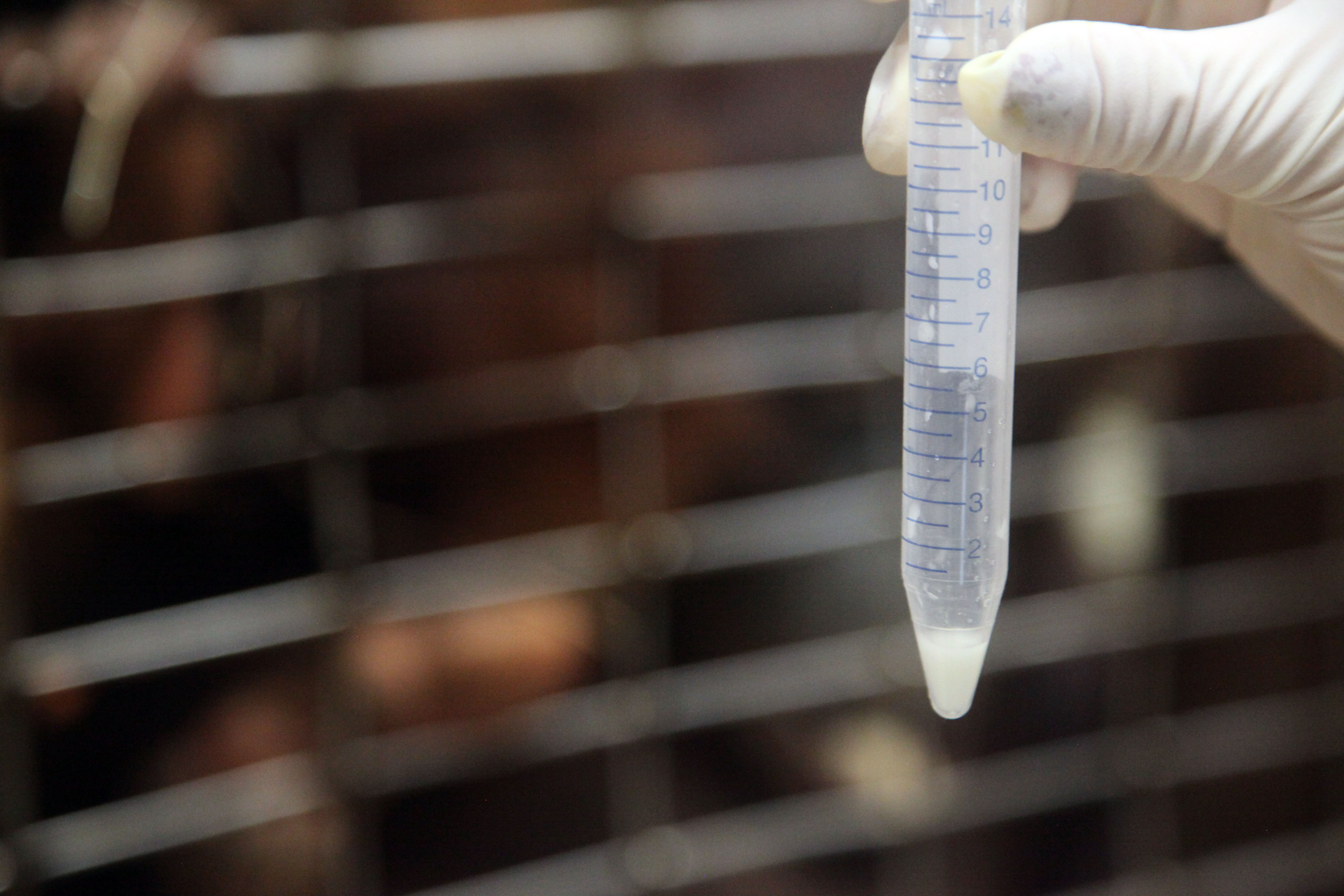
Stromberg only needs to collect a small amount of milk from Batang. The milk in this vial is more than enough for chemists to analyze in the lab.
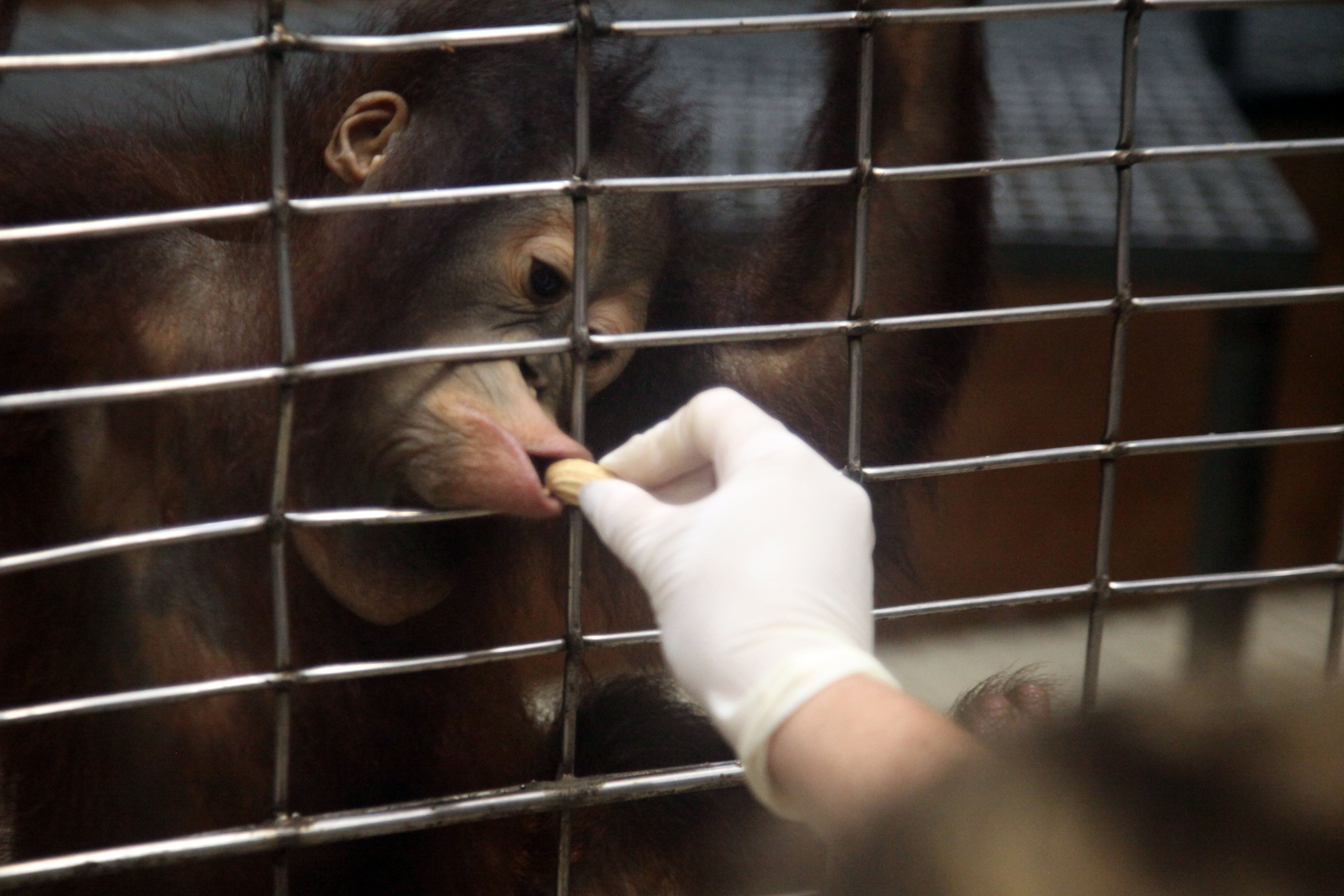
Redd gets to enjoy a few peanuts when his mom is giving milk. Like wild orangutans, he will nurse until he’s 6 or 7 years old. This makes orangutans the longest nursing of all mammal species. Bornean orangutans are one of three species of orangutans, all of which are critically endangered.
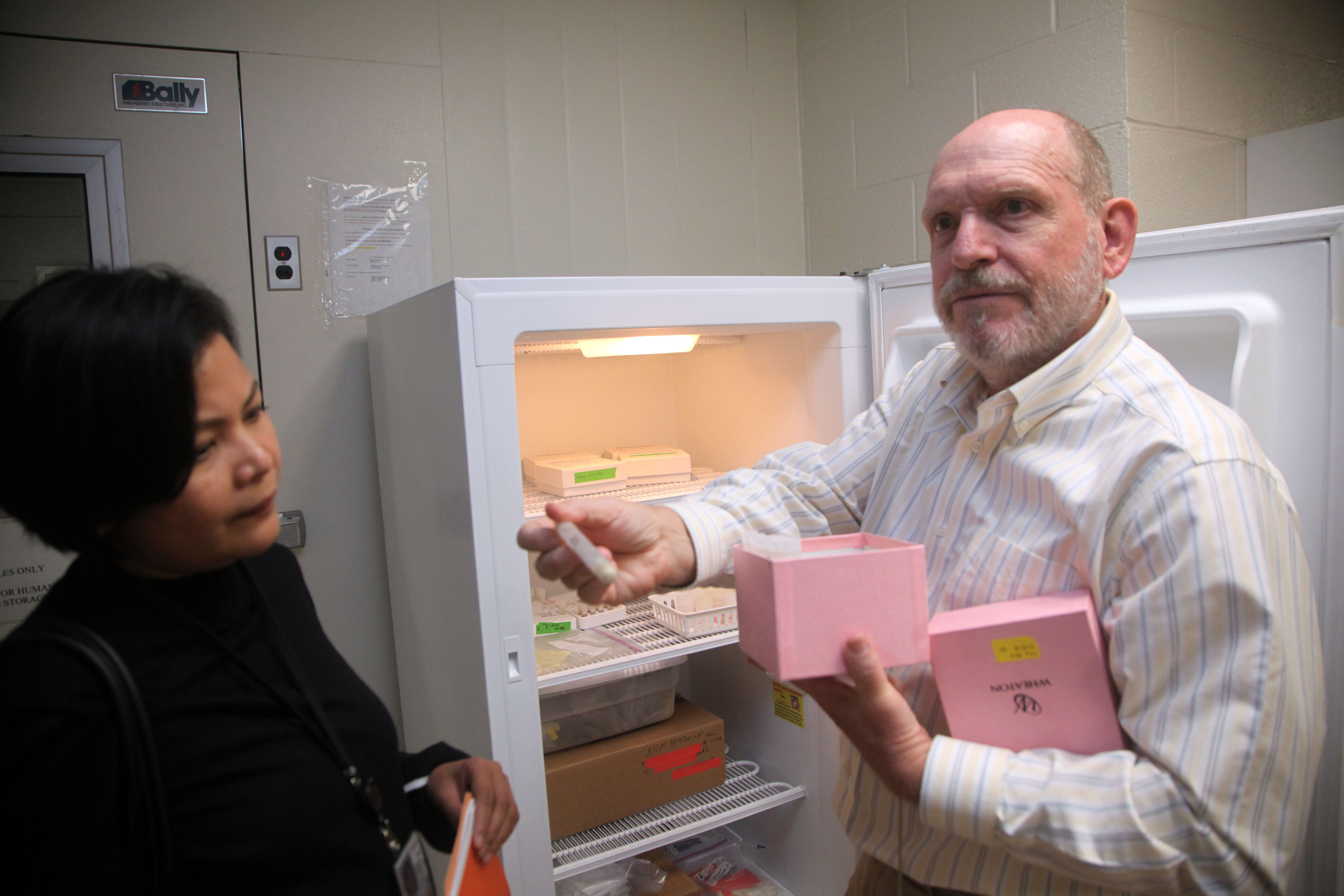
NIST research chemist Connie Remoroza meets with Michael Power, the Smithsonian scientist who curates the zoo’s milk repository. Remoroza is part of a NIST research team that uses advanced instruments to identify chemical compounds and determine their molecular structure. They are working with Smithsonian scientists to conduct specialized analysis of milk from several species.
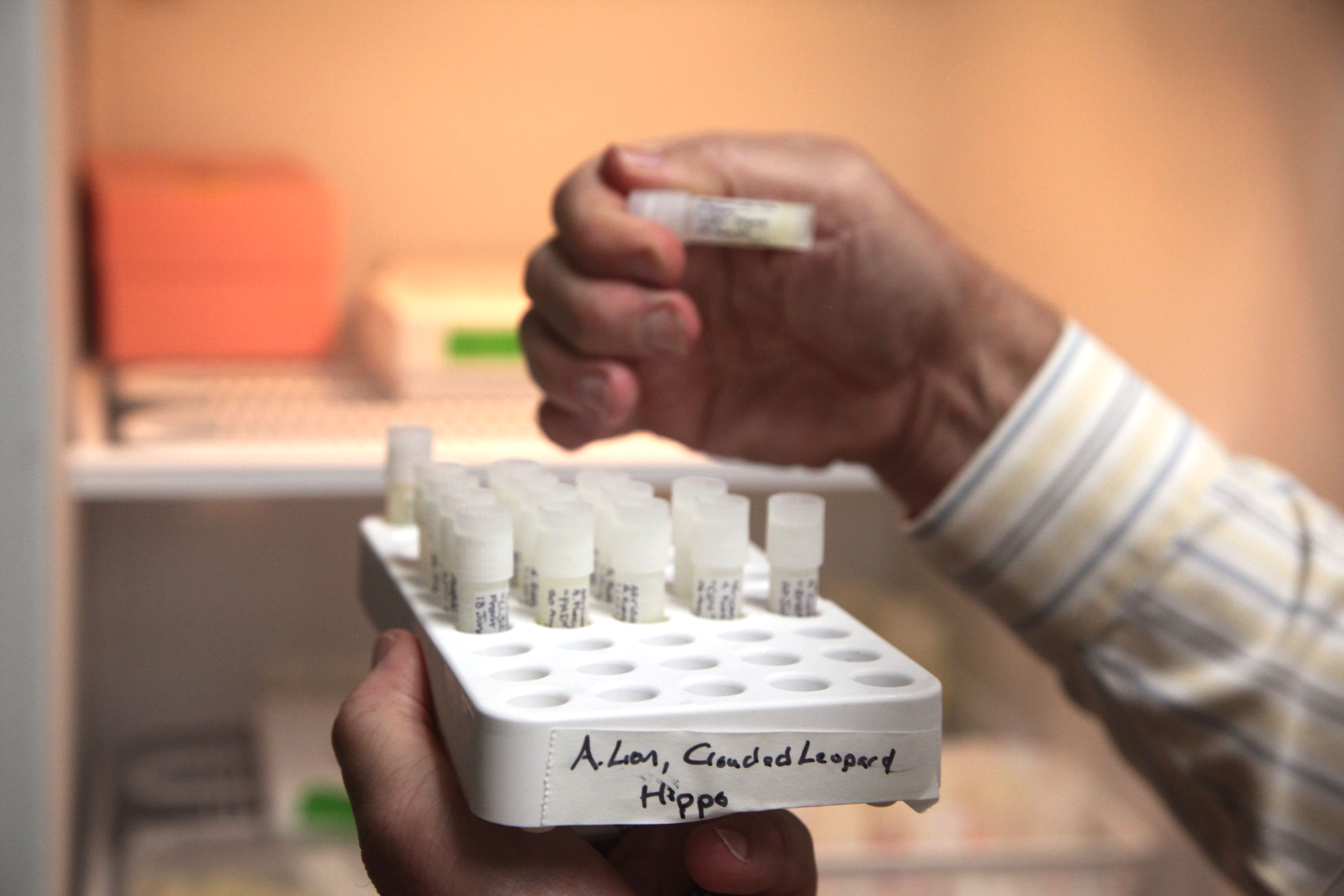
Michael Power retrieves a sample of African Lion’s milk from a freezer. Remoroza will bring the sample back to the lab at NIST, where she will identify the multitude of complex sugars, called oligosaccharides, present in the milk. These sugars have a more complicated molecular structure than the simple sugars found in most foods, and they do more than provide calories. Some play a role in immunity while others promote brain development.
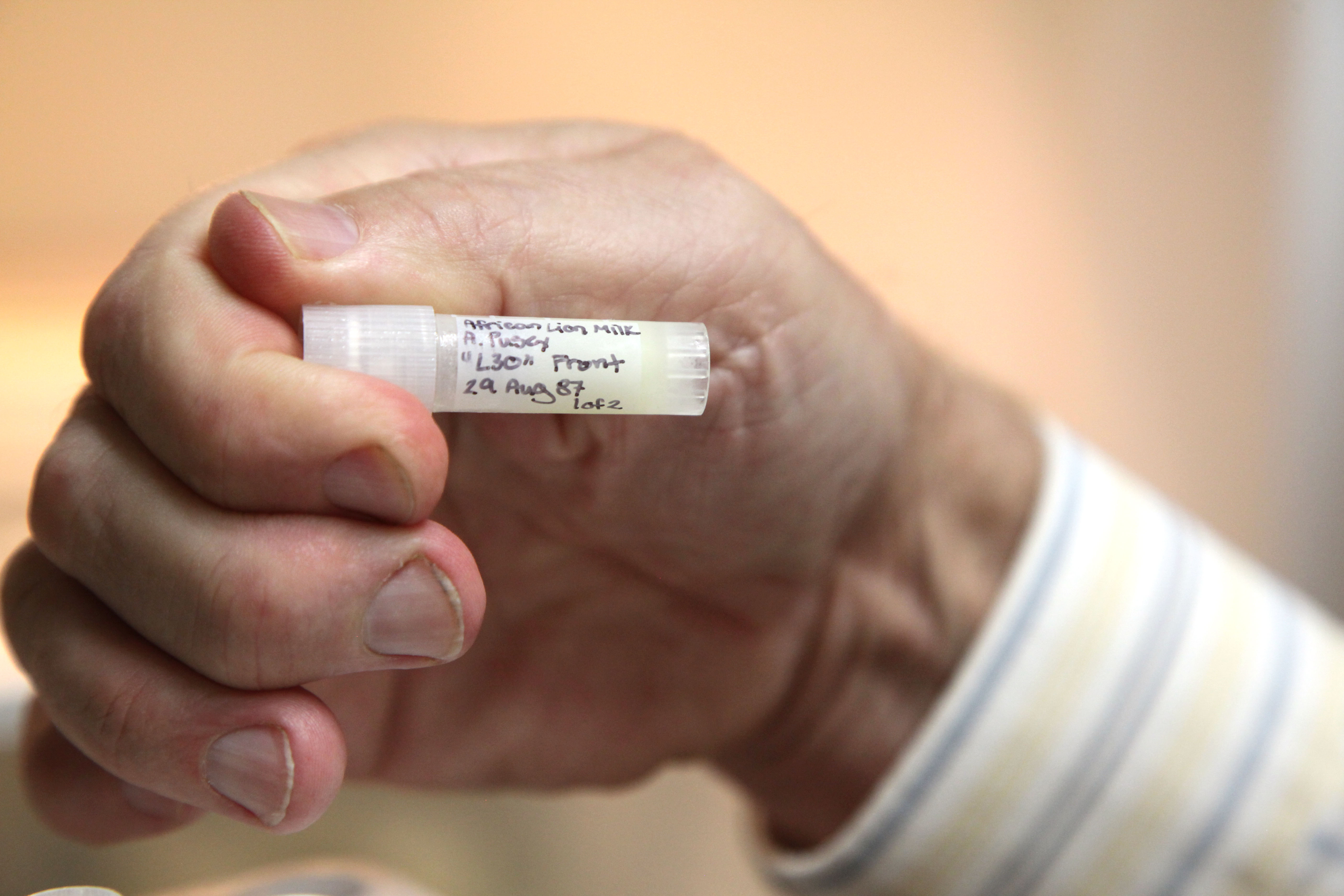
This sample of African Lion’s milk was collected from an animal in the wild. How does one collect milk from a lion? Wildlife biologists collected this sample after sedating the animal to conduct a health checkup and gather scientific data. Biologists from around the world send milk samples to Power for inclusion in the zoo’s collection.
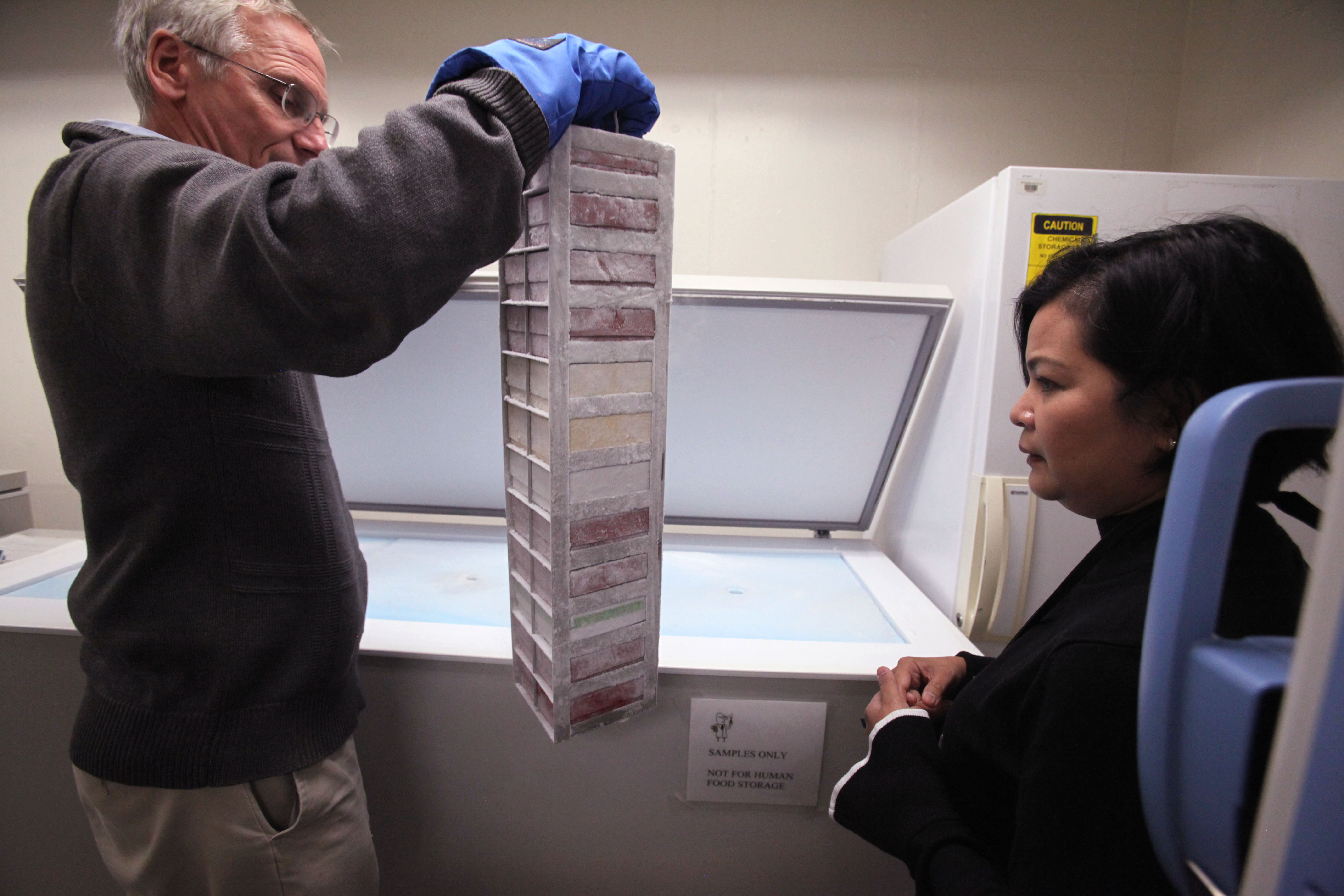
Zoo scientist Michael Jakubasz hauls samples out of the deep freeze, where they are kept for long-term storage.
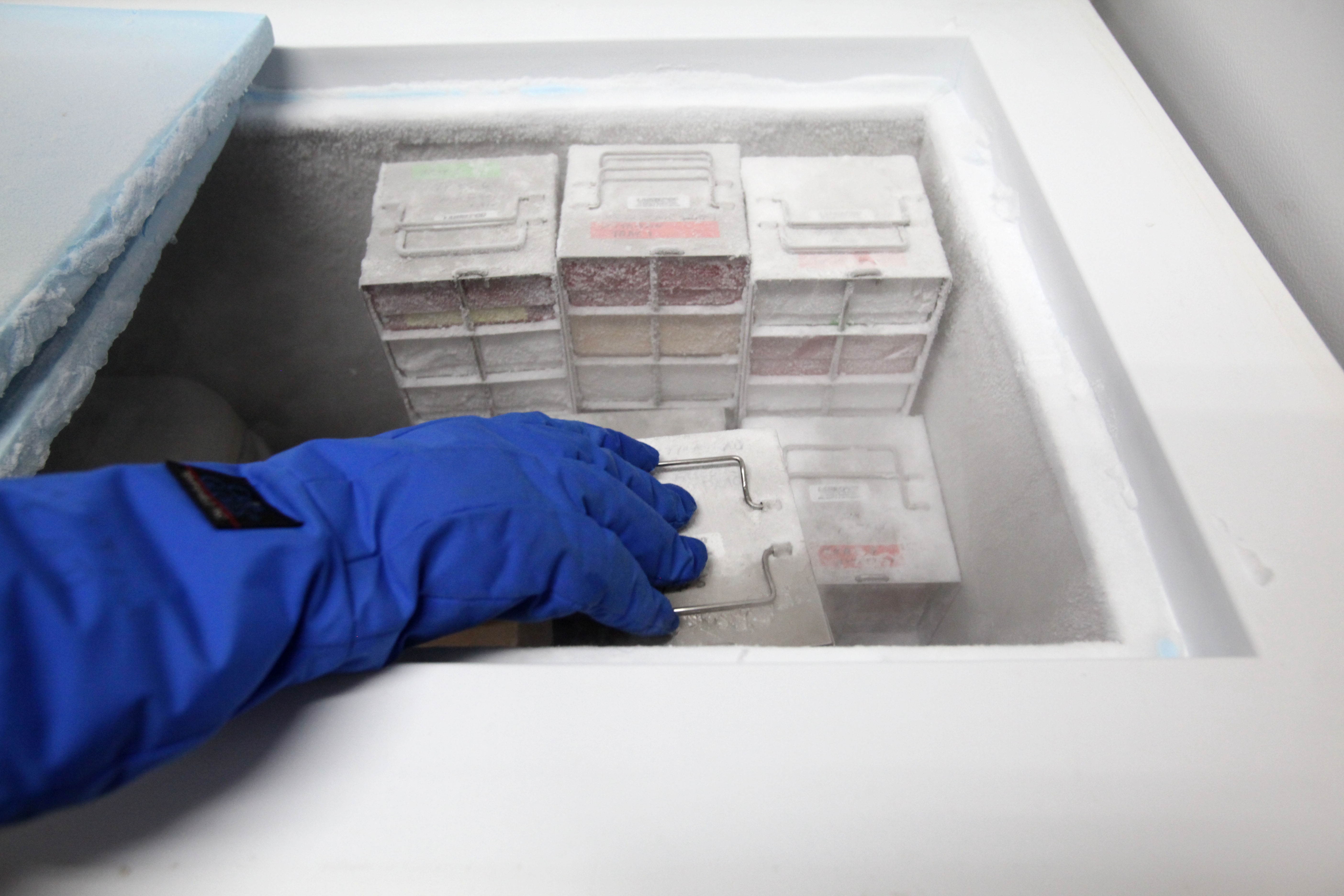
Milk samples at the National Zoo’s milk repository are stored at -80C.
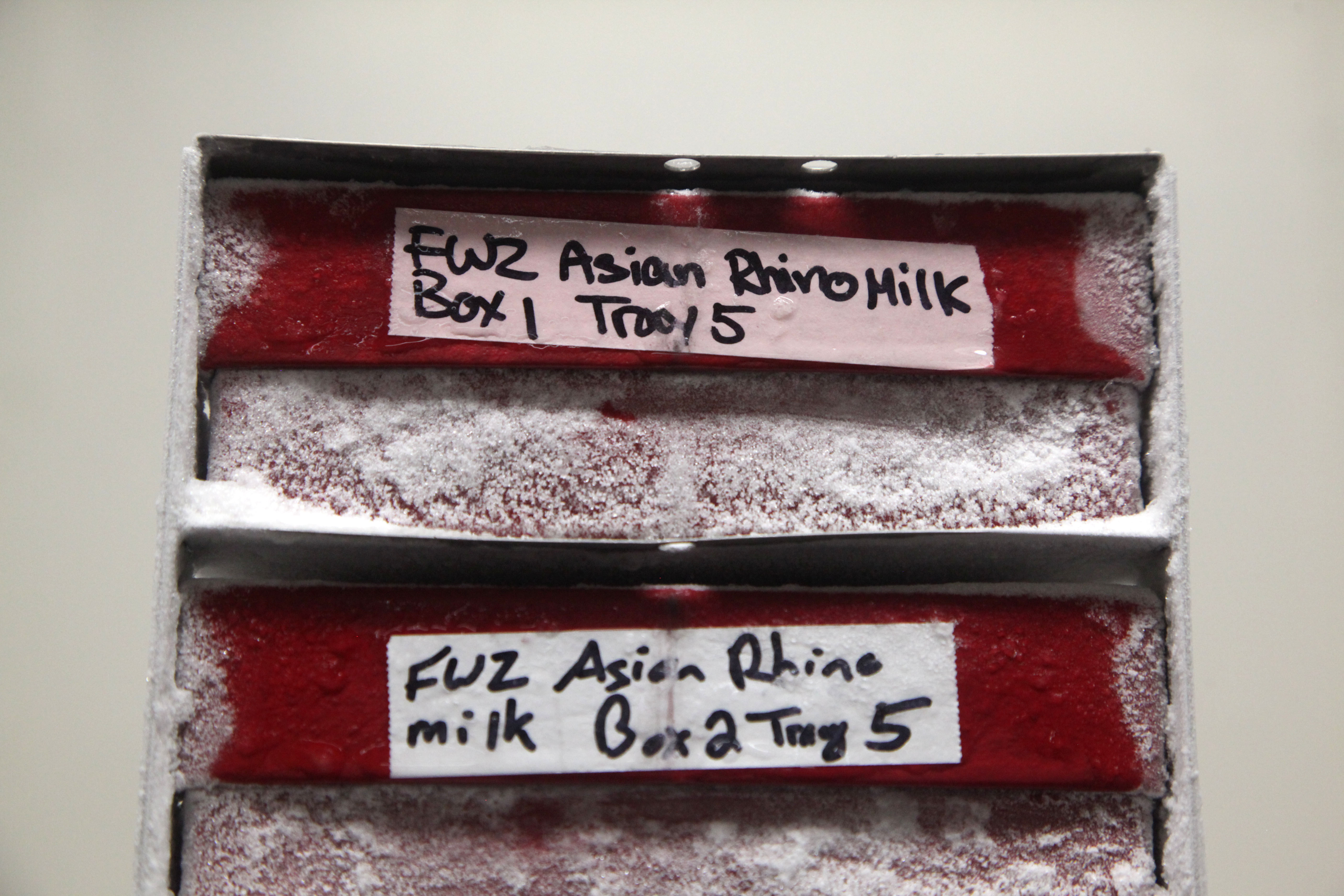
In addition to the samples of Rhinoceros milk shown here, the milk repository includes some 15,000 samples from more than 200 species. Smithsonian scientists analyze these samples to determine how much sugar, fat and protein they contain, among other things. Milks vary greatly between species, and any zoo can use this information to formulate a species-specific milk substitute if one of their animals is unable to nurse her young.
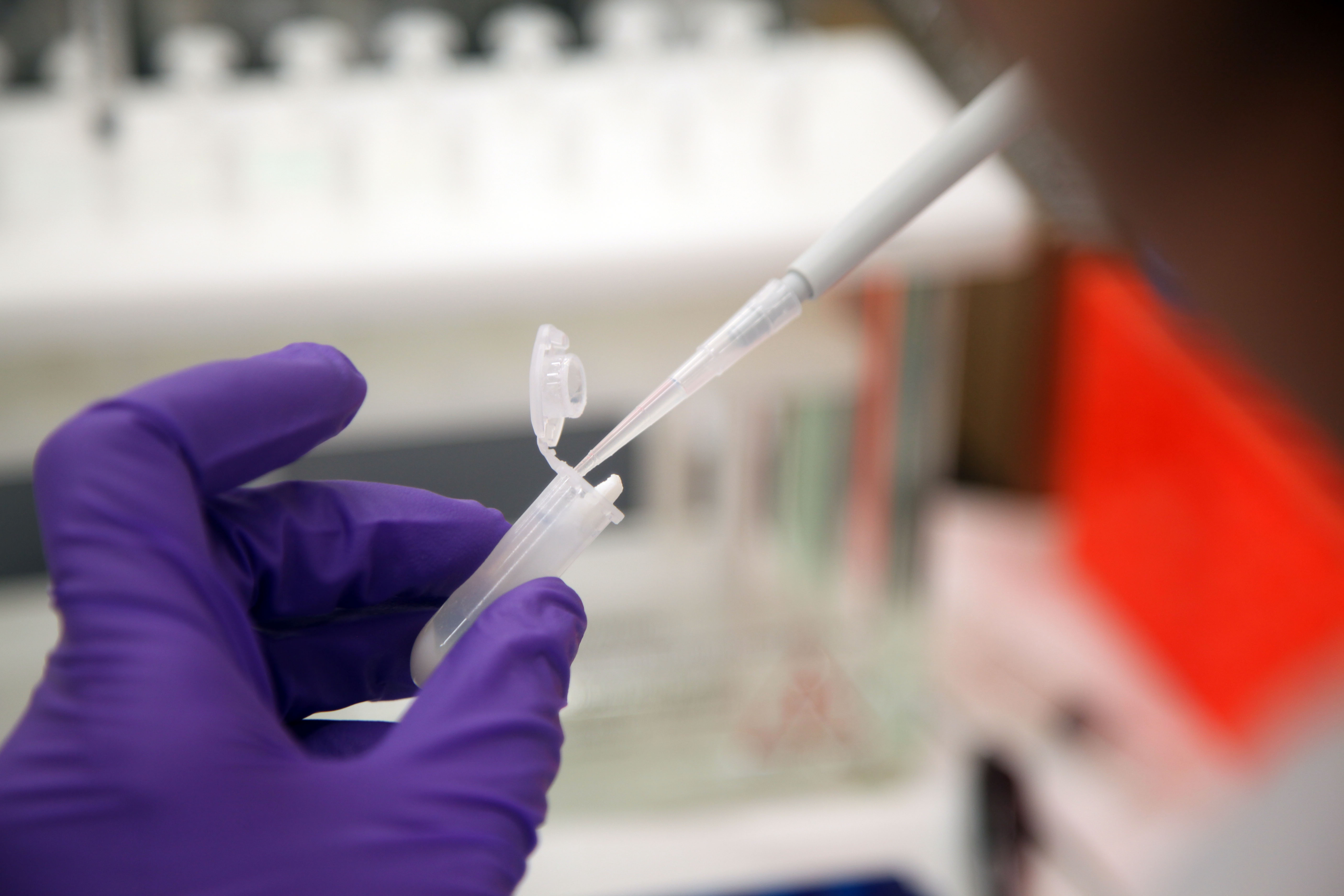
At the lab, Remoroza prepares a sample of human milk for analysis. So far, she and her colleagues have documented 74 different oligosaccharides in human milk, including 12 that were not previously known to be there. This information can be useful when formulating milk substitutes and when researching the myriad ways in which milk promotes healthy development.
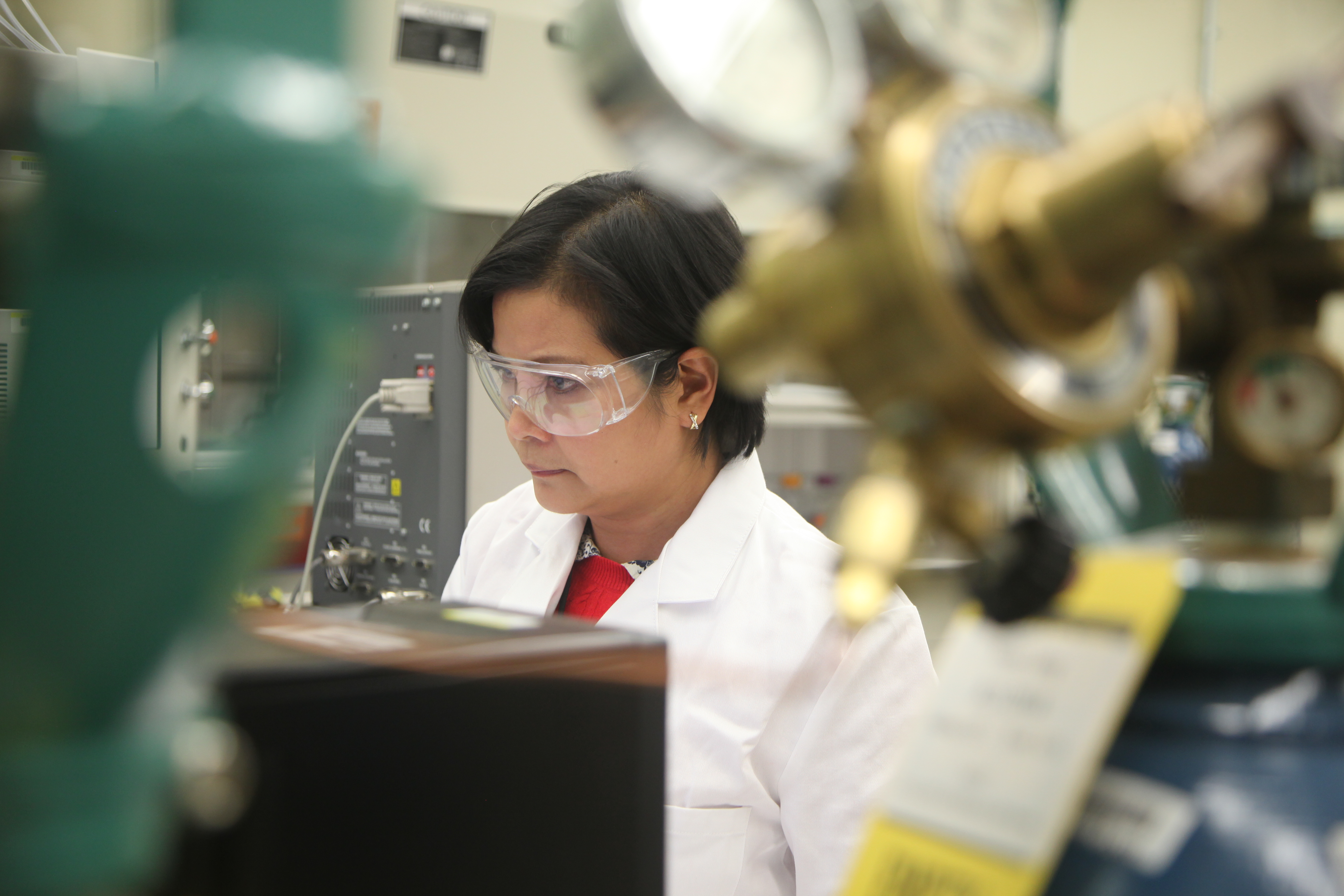
Remoroza operates a mass spectrometer, a laboratory instrument used to identify chemical compounds. “We want to find out as many details as we can about milk because it is so important, but so little is known about its chemistry,” Remoroza said.

